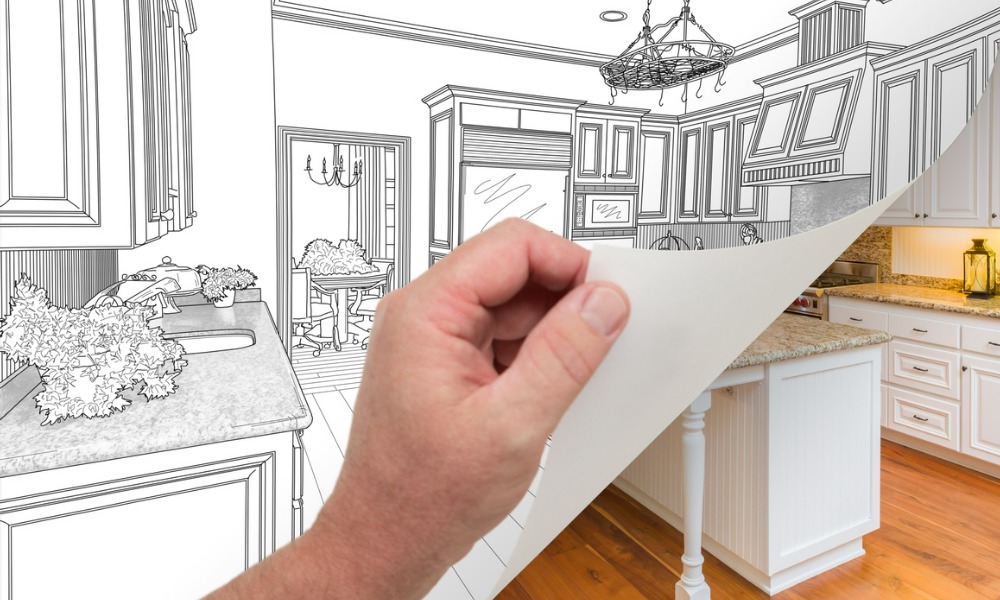Plus – the best types of loan for that scenario

If you are looking to get a mortgage loan to flip a house, there are two things you need to know: yes, it can be lucrative, but you will likely need to endure a heavy financial burden. This can be an especially difficult journey for beginners. Here are a few things you should know when getting a mortgage loan to flip a house.
The costs you need to cover when flipping a house
The payoff to purchasing, fixing up, and reselling homes can be quite high. But it is also important to understand that it requires a lot more money to flip a home than it does to purchase a home that you want to live in. Firstly, you need the funds to become the property owner and, secondly, funds for renovations, which also means covering utilities, property taxes, homeowners’ insurance after the sale is finalized all the way through to the day the property sells. Depending on your federal income tax bracket, short-term capital gains tax rates between 10-37% could also eat into your profits on homes you flip in under a year.
The reason flipping a house is more costly than borrowing to purchase a primary residence is that lenders view flipping as being a greater risk. Another snag in your house-flipping plan might be that, if you are inexperienced, it will be more difficult to find a lender that will work with you—and if they do, they will likely charge you higher interest and fees. Most lenders will want to see that you have a successful track record of flipping at least one property for profit.
What type of loan is best for house flipping?
Hard money loans. Since lenders do not necessarily look at your credit in this case, hard money loans may be easier to qualify for. While lenders could pull your credit to see your debt-to-income ratio, they usually do not look at the score itself. Another perk to hard money loans is that the approval time could be quite a bit faster, since there is less underwriting. You could also qualify with blemishes on your credit. The downside, on the other hand, is that interest rates and origination fees will likely be far more costly than with traditional mortgages.
Home equity line of credit (HELOC). These are similar to using a credit card, except that your house is used as collateral. Based on the equity of your current property, you get a revolving line of credit, with two different phases, the draw and repayment periods. During the draw period, you only pay interest on the line of credit you are using. During the repayment period, you pay both the principal and interest back and can no longer draw on the line of credit.
Cash-out refinance. In this instance, you use the equity from another home you own to invest in the home you are flipping. Since it is based on an existing primary residence, cash-out refinance is one of the cheaper financing options. The home is already finished, so lenders are less fearful of risk.
Read more: Cash out refinance: Definition and how it works
Loans from your personal network. These loans are from your family, friends, or associates who want to back your project. Typically, the money will be lent in exchange for a share of potential profits or interest payments.
Crowdfunding. The benefit of crowdfunding is that if you have enough investors, you can fund the project fairly quickly. It also means you do not have to qualify for a loan or fund the whole thing yourself. The downsides include having to market the project, pitch your business plan, and prepare for rejection. It could also mean you receive a smaller percentage of the profit, depending on your arrangement.
How to get a loan to flip a house
Ready your blueprints. To give an idea of the costs, anyone you are working with will want to see your blueprints and have estimates from contractors, especially lenders, because they are the ones paying off the loan with the money from the sale of the property after renovations and repairs.
Know the market. Appraisers assign a value to your property based on properties that have similar features, so it is a good idea to know the market and analyze recent sales to avoid surprises.
Loan-to-value ratio (LTV). This ratio compares the overall value of the home to the amount of the loan. Usually, it helps decide what your mortgage rate is on any financing used to buy the property in the first place.



